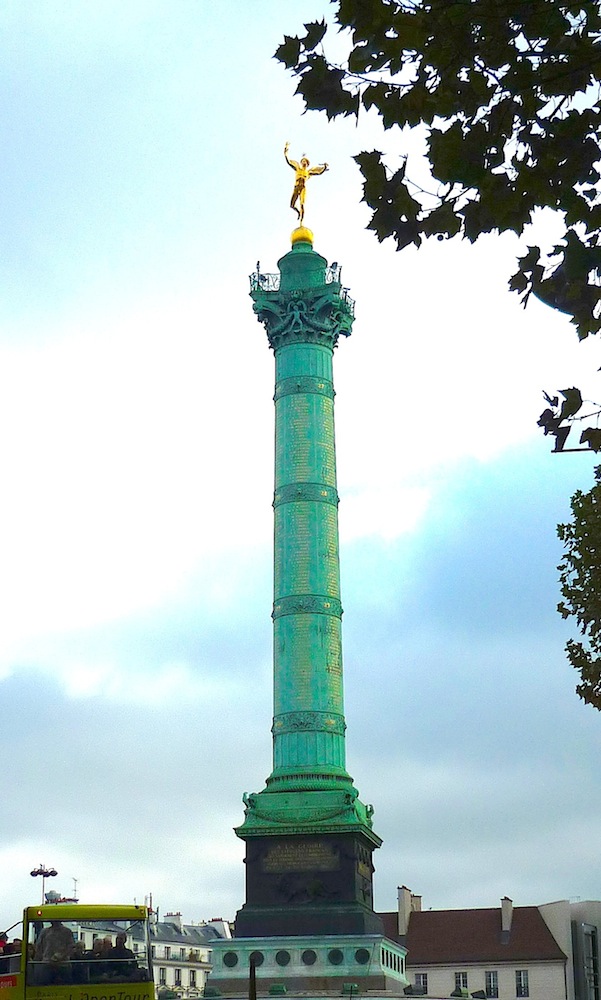

Left: The Spirit of Freedom by Augustin Dumont (1801-84), installed on its column in 1840. Right: Statue on its platform and globe.
The Spirit of Freedom by Augustin Dumont (1801-84) was installed on a column designed by Jean-Antoine Alavoine (1776-1834), and completed, with some revisions, by Joseph-Louis Duc (1802-79). It was inaugurated 1840, when the sculpture was installed. Greened bronze, with a gilded globe and statue, the monument stands in the Place de la Bastille, Paris.

Towering over the middle of the square, the column is often taken as commemorating the 1789 Revolution, and indeed it was originally conceived as such, and is in an area where people often gather to take place in political protests. However, its history is somewhat more recent than many suppose. Gilles Desmons explains that, as eventually built, it commemorates "the 1830 Revolution of the Trois Glorieuses (the last three days of July, 1830)." He continues,
The 504 dead of this short-lived uprising were placed in an ossuary underneath the column, as, later, were the dead of the I848 revolution. The column was begun by Jean Antoine Alavoine (1776-1834) in 1831 and finished by Joseph Duc (l802-1879) l0 years later. It is bronze, 52m (171 ft) high and 4m (I3 ft) wide, hollow and in three distinct parts, each symbolizing one of the three days. At the top is the recently regilded Génie de la Liberté (Spirit of Liberty). [145]
The lithe and balletic sculpture certainly has the air of a spirit about it. It is crowned with a star and holds a torch representing civilisation in one hand, and the snapped chain of bondage in the other. It is supported by another motif: the lion. There are lion's head bosses below, and a bronze bas-relief of a pacing lion on the socle, all the work of another eminent sculptor, Antoine-Louis Barye (1796-1875; see Benge 39). The lion is generally seen as a "symbolic guardian of popular sovereignty" (see Michalski 21), but it may also serve more generally as a symbol of the bravery and fortitude which are needed, now as ever, to defend freedom.
Photographs and text Jacqueline Banerjee. You may use these images without prior permission for any scholarly or educational purpose as long as you (1) credit the photographer and (2) link your document to this URL or cite the Victorian Web in a print document. Click on the images to enlarge them.]
References
Benge, Glenn F. Antoine-Louis Barye: Sculptor of Romantic Realism. Philadelphia: Pennsylvania University Press, 1984.
Desmons, Gilles. Walking Paris: Thirty Original Walks in and around Paris. 4th ed. London: New Holland Publishers, 2008.
Michalski, Sergiusz. Public Monuments: Art in Political Bondage 1870-1997. London: Reaktion, 1998.
Created 13 January 2015